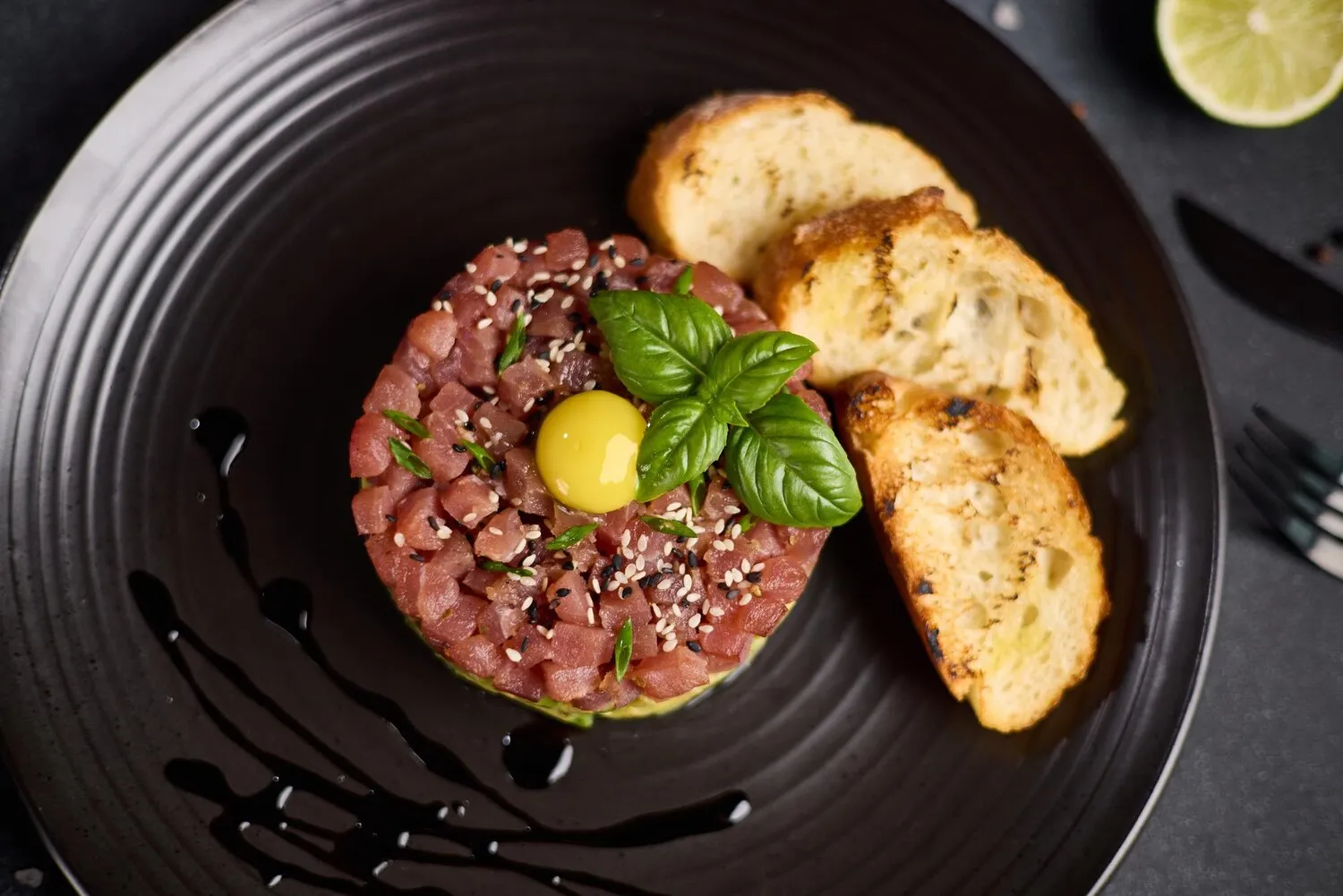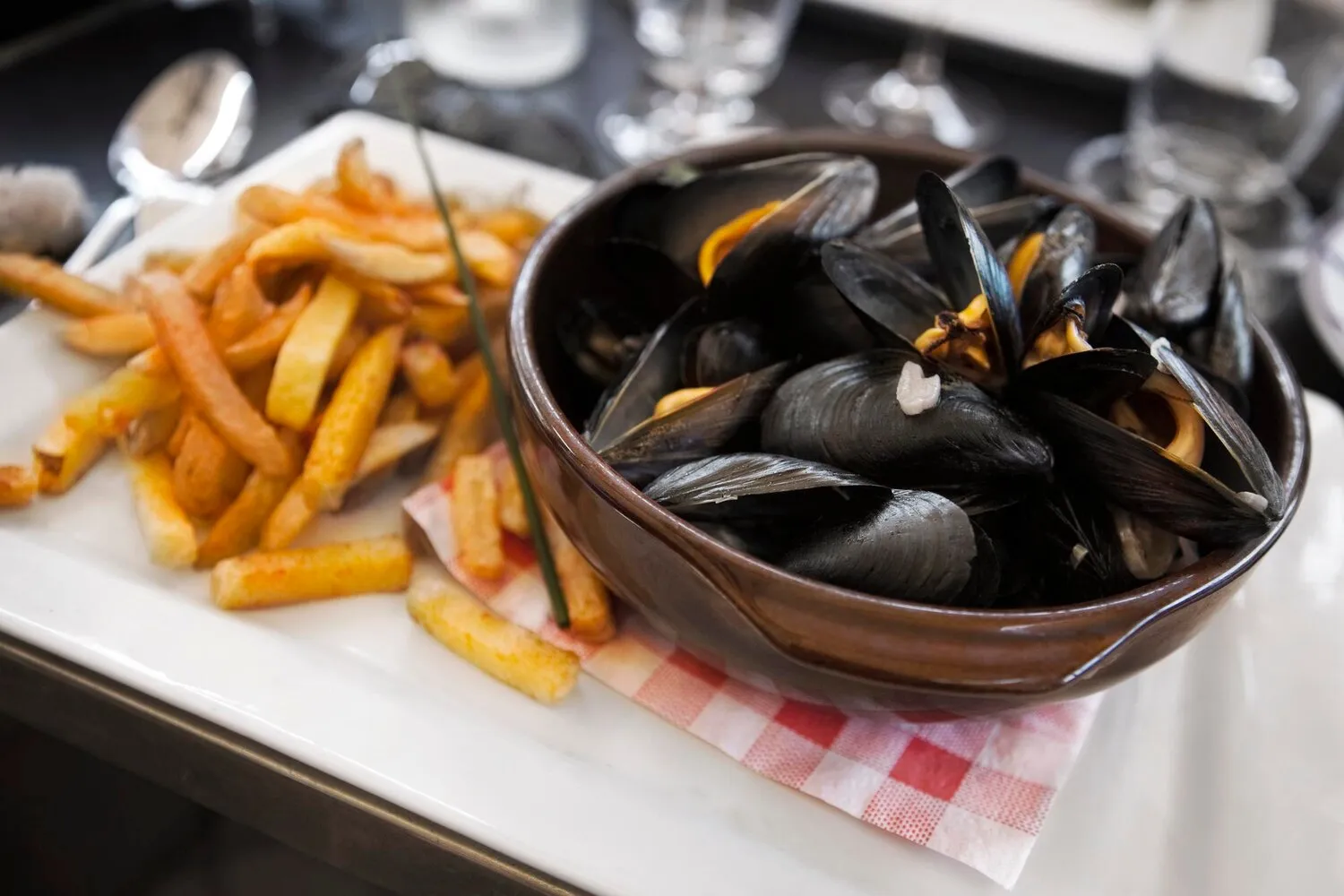
Steak Tartare
Raw ground beef with various seasonings.
Nutrition Facts
* The % Daily Value (DV) tells you how much a nutrient in a serving of food contributes to a daily diet. 2,000 calories a day is used for general nutrition advice.
While the exact origins are debated, Steak Tartare's lineage likely traces back to raw meat dishes consumed by nomadic tribes in Central Asia. Some believe it evolved from a dish called 'beefsteak à l'Américaine,' popularized in early 20th-century Europe. The connection to the Tatar people is more romanticized than historically accurate, often associated with their supposed consumption of raw meat.
Steak Tartare occupies a unique place in culinary culture, often seen as a sophisticated and adventurous dish. Its consumption is often associated with fine dining and a willingness to embrace raw foods.
Culinary Sophistication
Steak Tartare is often featured on the menus of upscale restaurants and is considered a delicacy. Its presentation and preparation are often meticulous, reflecting a commitment to quality ingredients and skillful technique.
Raw Food Appreciation
The dish represents an acceptance and appreciation of raw ingredients, a trend that has gained popularity in recent years with dishes like sushi and ceviche. It requires trust in the quality and freshness of the ingredients.
Aversion and Appeal
Steak Tartare can be polarizing. Some find the idea of eating raw beef unappetizing, while others are drawn to its unique flavor and texture. This division contributes to its somewhat niche status.
Steak Tartare offers a complex and savory flavor profile, balancing the richness of raw beef with sharp, tangy, and spicy elements.
The primary flavor is the clean, slightly mineral taste of high-quality raw beef. This is enhanced by acidic notes from ingredients like capers, cornichons, and Dijon mustard, which cut through the richness. Onions and shallots contribute a pungent sharpness, while Worcestershire sauce adds umami. Egg yolk contributes a creamy texture and richness, further binding the flavors. Hot sauce or freshly ground black pepper provide a subtle heat.
Source High-Quality Beef
The most crucial aspect is using exceptionally fresh, high-quality beef from a reputable source. Ask your butcher for a lean cut suitable for raw consumption, ideally tenderloin or sirloin. Verify that the beef has been properly handled and stored.
Maintain Cold Temperatures
Keep the beef and all ingredients cold throughout the preparation process to minimize the risk of bacterial growth. Chill your mixing bowl and utensils beforehand.
Prepare and Serve Immediately
Consume Steak Tartare immediately after preparation. Do not let it sit at room temperature for extended periods.
Consider Pasteurized Egg Yolks
To minimize the risk of salmonella, consider using pasteurized egg yolks, especially for individuals with compromised immune systems or pregnant women.
Customize the Seasoning
Adjust the seasoning to your personal preference. Experiment with different types of mustard, hot sauces, and herbs to create your perfect tartare.
Explore additional Belgian dishes and restaurants
Explore BelgianDiscover top dining spots and culinary experiences in Namur.
Explore NamurLearn more about the food culture, restaurant scene, and culinary heritage of Belgium.
Explore Belgium
